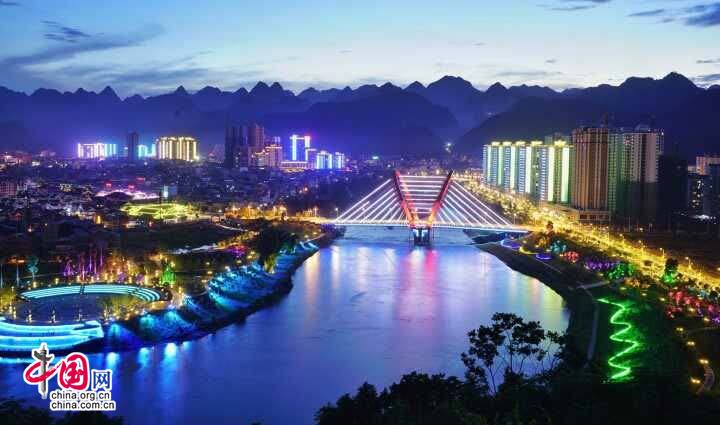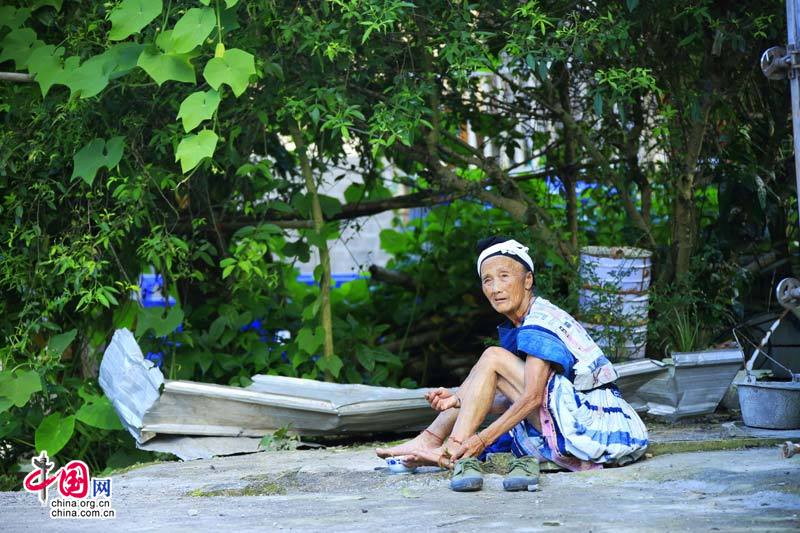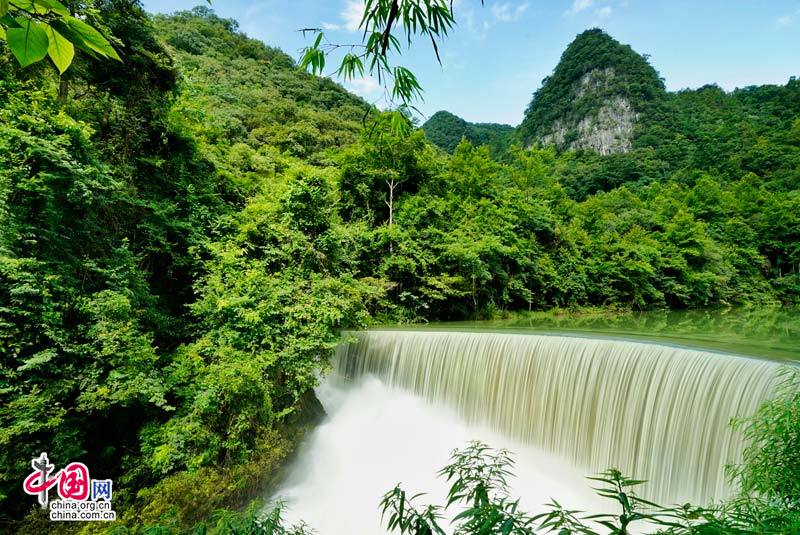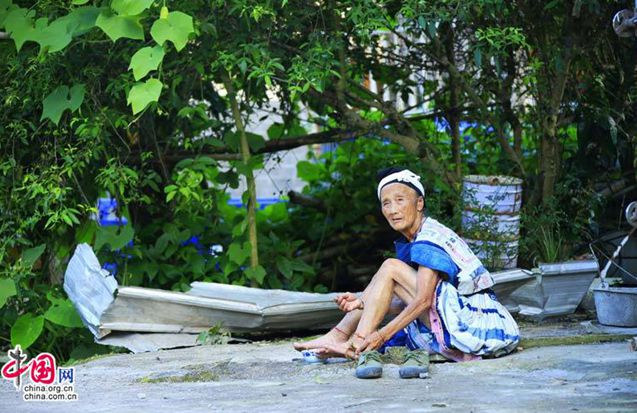Libo: a world-class tourist destination
- By Yuan Fang
 0 Comment(s)
0 Comment(s) Print
Print E-mail China.org.cn, August 4, 2017
E-mail China.org.cn, August 4, 2017
Libo, a county located in the southernmost part of Guizhou Province, at the heart of the triangle tourist area formed by Kunming, Guilin and Zhangjiajie, is a world-class tourist destination.
In addition to a wonderful ecology and rich ethnic culture, Libo is also home to Xiaoqikong and Dongduo, two karst sites that form part of the multi-site South China Karst UNESCO World Heritage Site, and Maolan Nature Reserve, a member of UNESCO’s Man and Biosphere Program.
It does not suffer from severe cold in winter or searing heat in summer. Forest coverage rate for the whole county is 70 percent and over 92 percent for its Zhangjiang Scenic Area and Maolan Nature Reserve.
Libo is also dubbed as a natural “air conditioner”, “oxygen bar” and “gene pool” because each cubic centimeter of its air contains as many as 180,000 negative oxygen ions, 100 times that of the World Health Organization standard and more than three times that of Hainan.
Libo has abundant tourism resources. Notable scenic areas include AAAAA-rated Zhangjiang Scenic Area, Maolan Nature Reserve, drifting site Shunchun River, Xuanwushan Scenic Area, Huangjiang Wetland Park, Laocun Grand Canyon, Libo Ancient Town, Yaoshan Ancient Village, 10,000-mu Plum Garden, Sifan Valley in Jialiang Town, and Spinulose Tree Fern Valley in Jiarong Town. The number of tourist attractions in those scenic areas has reached 57, of which 6 are world-class and 25 are national-level.
Libo is arguably a “kingdom of mountain and river.”
Libo is also a colorful “ancient book.” Ethnic minorities, predominantly Bouyei, Shui, Miao and Yao, account for 93 percent of the local population of 180,000. Each of the ethnic groups has distinct traditions and culture inherited from long ago, including wedding and funeral customs, unique architectural styles of residential buildings, colorful festivals and gorgeous ethnic costumes.
The Shui ethnic group is regarded as a noble group from ancient times. Its language is as old as oracle bone script. With the approval of the State Council, the Shui language was included in the Ministry of Culture’s first batch of national-level intangible cultural heritages. It is now applying for a World Cultural Heritage designation.
Yao ethnic group is called the “Oriental Indians” because its cultural totem bears extreme similarities with those of Indians.
The more than 300 quaint villages scattered around Libo are all suitable for tourism development because of their wonderful ecology and colorful ethnic culture.
Libo is also the hometown of Deng Enming, a delegate of the First National Congress of the Communist Party of China, and boasts an amazing revolutionary legacy. Its Banzhai Village was where part of the Chinese Workers’ and Peasants Red Army joined forces in 1930; its Dawn Pass was where Guizhou’s first gunshot to resist the Japanese invasion was fired in 1944; its Weng’ang Township was the headquarters and recuperation site of a Red Army branch.
Libo has won numerous accolades as a tourist destination, including the Most Beautiful Place in China, an Ace International Tourist Destination, a National-level Demonstrative Zone for Ecological Preservation, the Best Chinese County for Mountain and River Views and the Best Chinese County for Experiencing Ethnic Culture.
(Photo by Yan Guoliang and Qiu Lei)









Go to Forum >>0 Comment(s)